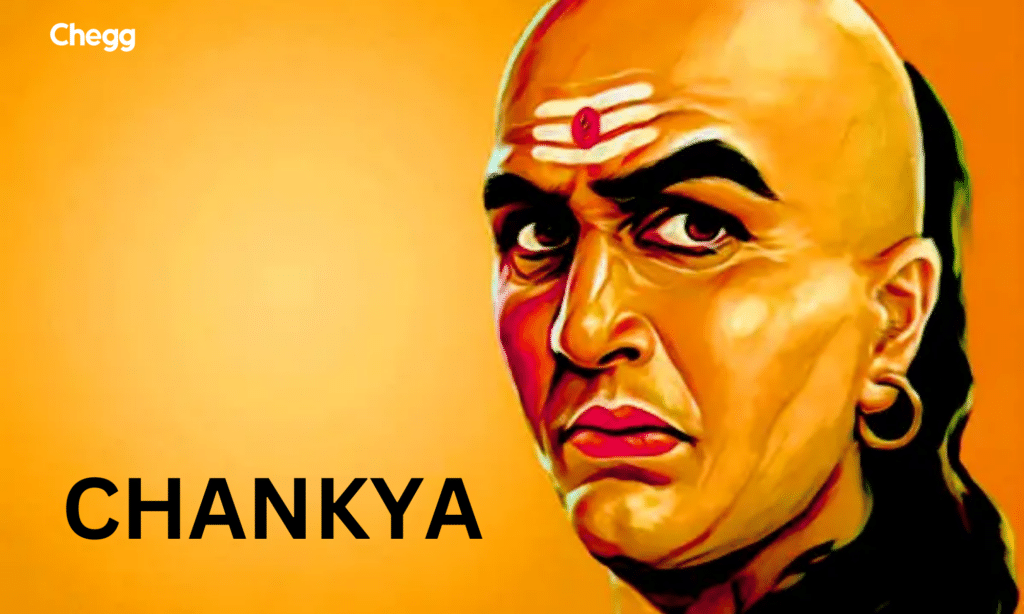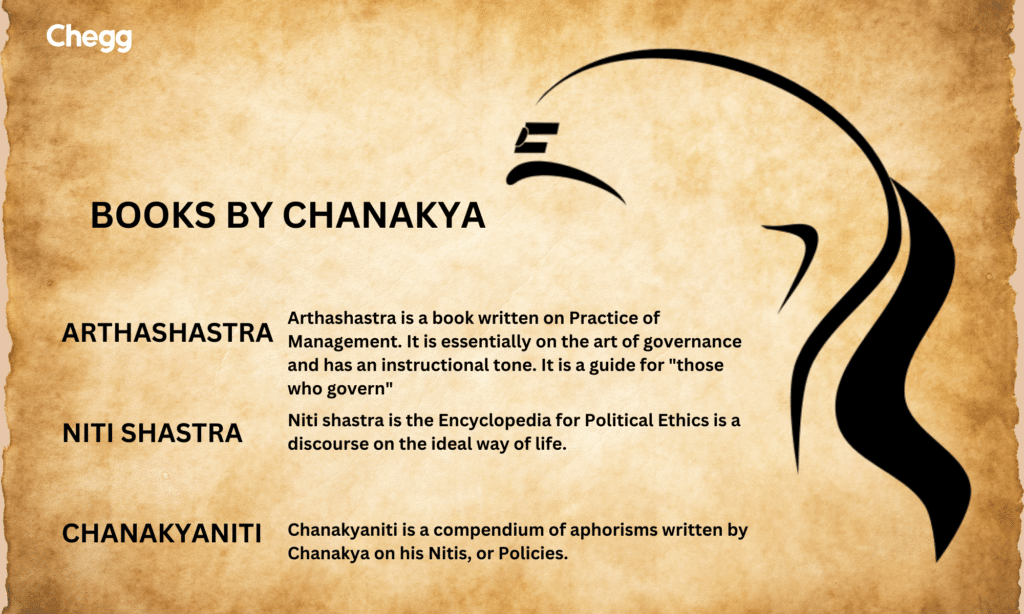
Quick Summary
Empire Architect – Chanakya helped Chandragupta Maurya build the Mauryan Empire.
Political Thinker – Authored Arthashastra, a key text on governance and economics.
Lasting Legacy – His strategies influence leadership and politics even today.
Table of Contents
Who was Chanakya? Chanakya was a wise teacher, a thinker, and even an advisor to Chandragupta Maurya. He is often known as Kautilya or Vishnugupta, credited with writing the Arthashastra, an ancient Indian treatise on governance dating from the 4th century BCE to the 3rd century CE. Considered the pioneer of Indian classical political economy, his work laid the foundation for classical economics. Lost after the Gupta Empire’s decline in the 6th century CE, his writings resurfaced in the early 20th century.
Who Was Chanakya? Chanakya, instrumental in Chandragupta’s rise to power in 321 BCE, played a key role in establishing the Mauryan Empire. As principal advisor to Chandragupta and his son Bindusara, Chanakya consolidated control by eliminating Nanda’s oppressive regime.
The legacy of Chanakya, also known as Kautilya or Vishnugupta, is profound and multifaceted, influencing various aspects of political thought, governance, and strategy both in ancient India and in contemporary contexts. Who was Chanakya in the context of his lasting legacy? He is regarded as one of the greatest political thinkers in Indian history, and his ideas continue to resonate in modern political discourse. Ultimately, understanding who was Chanakya provides valuable insights into the principles of governance and the importance of the welfare of the state and its citizens. Here are some key elements of his legacy:
Who was Chanakya? Chanakya’s most significant contribution is his work, the ‘Arthashastra,’ which serves as a foundational text in political science and economics. It outlines principles of statecraft, governance, and military strategy, emphasizing the importance of pragmatism and realpolitik. His ideas on power dynamics, diplomacy, and state management continue to be studied and applied in modern political theory.
Chanakya is often regarded as one of the earliest proponents of strategic thinking. His emphasis on planning, foresight, and adaptability in governance has influenced military leaders, politicians, and business strategists alike. His teachings encourage leaders to be shrewd and resourceful in navigating complex political landscapes.”
Chanakya’s principles of leadership stress the importance of strong, decisive governance. He advocated for the welfare of the state and its citizens, emphasizing that a ruler should be wise, just, and capable of making tough decisions for the greater good. His ideas on ethical leadership and the responsibilities of rulers remain relevant today. His teachings encourage leaders to be shrewd and resourceful in navigating complex political landscapes.
In the “Arthashastra,” Chanakya discusses various aspects of economics, including taxation, trade, and resource management. His insights into economic policies and practices have influenced economic thought in India and beyond, highlighting the interconnectedness of politics and economics.
Chanakya’s life and teachings have inspired numerous works of literature, films, and television series, making him a prominent figure in Indian culture. His character is often depicted as a wise and cunning strategist, symbolizing intelligence and resourcefulness.
Chanakya’s teachings are incorporated into various educational curricula, particularly in the fields of political science, management, and leadership studies. Who is Chanakya? His teachings encourage leaders to be shrewd and resourceful strategies and philosophies are taught in business schools and political science programs, emphasizing their relevance in contemporary contexts.
In Indian culture, Chanakya is often seen as a symbol of wisdom and intelligence. Who is Chanakya? Chanakya’s most significant contribution is his work, the ‘Arthashastra,’ which serves as a foundational text in political science and economics. Who was Chanakya? His name is synonymous with cleverness and strategic thinking, and he is frequently referenced in discussions about leadership and governance.
Chanakya’s principles are applied in various fields today, including business management, military strategy, and political campaigns. His emphasis on strategy, negotiation, and understanding human behavior resonates with modern leaders and decision-makers.
Who was Chanakya? Chanakya, also known as Kautilya or Vishnugupta, was an ancient Indian philosopher, economist, and statesman who lived around the 4th century BCE. He is best known for his role as the chief advisor to Chandragupta Maurya, the founder of the Mauryan Empire.
This tale is deeply intertwined with the question, who was Chanakya? Chanakya played a crucial role in overthrowing the Nanda dynasty and establishing Mauryan rule in India. As a philosopher and economist, who was Chanakya is often associated with his significant contributions to political theory and statecraft. He authored the ‘Arthashastra,’ a foundational text on governance, economics, and military strategy.

Who was Chanakya? He is the author of the “Arthashastra,” a seminal text on statecraft, economics, and military strategy, emphasizing pragmatic and strategic approaches to governance. Chanakya, also known as Kautilya or Vishnugupta, was an ancient Indian philosopher, economist, and statesman who lived around the 4th century BCE. Chanakya’s teachings and strategies have had a lasting impact on political thought and continue to be studied for their relevance in various fields today. He is often regarded as one of the greatest political thinkers in Indian history.
The term “Saptang” signifies seven integral components or elements. According to this doctrine, a well-governed kingdom comprises these essential elements that foster stability and prosperity:
The rise of Chandragupta Maurya is a remarkable story of ambition, strategy, and the establishment of one of ancient India’s most significant empires. This journey is closely intertwined with the question, who is Chanakya? Here’s an overview of Chandragupta’s ascent:
Chanakya, also known as Kautilya, is believed to have died around 283 BCE, shortly after the establishment of the Mauryan Empire under Chandragupta Maurya. The exact circumstances of his death are not well-documented, but it is generally thought that he died of natural causes. Despite the uncertainty surrounding his passing, his contributions to political thought and strategy have left a lasting impact on history.

Two key works are attributed to Chanakya:
This article provides information about “Who is Chanakya.” Chanakya dedicated his life to creating the Mauryan Empire and aiding its founders, Chandragupta Maurya and his successor, Bindusara. He was their counselor, economist, and philosopher. His insight into human nature is crucial. This principle is deeply rooted in the teachings of who was Chanakya, He stressed understanding people’s strengths and weaknesses is essential for leadership and communication. This still applies as today’s successful leaders grasp the motives behind behavior.
To understand the significance of his ideas, it is essential to ask, who was Chanakya? Chanakya’s teachings stay relevant in modern India. He envisioned a united subcontinent, shaping India’s foundations. His ideas on policing, justice, charity, conflict prevention, and diplomacy remain relevant, earning him the title of the Indian Machiavelli. His words echo: “Never share your secrets with anybody. It will destroy you.”
Chanakya became famous for advising Chandragupta, who started the Mauryan empire in northern India. He helped Chandragupta defeat the Nanda dynasty and rule the Magadha region.
Chanakya (who flourished around 300 BCE) was a renowned Hindu statesman and philosopher best known for authoring the Artha-shastra (“The Science of Material Gain”), a comprehensive treatise on politics, economics, and governance. This influential work compiled the vast knowledge of artha (wealth, property, and material success) in India up to that era.
Chanakya’s principles include Amatya, Swami, Janapada, Kosha, Durg, Mitra iti pratikriya, and Dand. His teachings emphasize ethics, moral values, and strategic foresight in personal and political life.
His original name was Vishnugupta, and he was born in Patliputra, Patna. After his father’s name, Chanak, he was referred to as Chanakya. He was also known as Kautilya because he dealt with astute individuals in a clever and crafty manner (kutil).
The three rules of Chanakya were: Success by counsel, Success by might and Success by energy.
Chanakya was also known as Kautilya or Vishnugupta.
Chanakya was born in 350 BCE in Takshashila, which is now in Pakistan. He died in 275 BCE Pataliputra, Mauryan Empire.
Acharya Chanakya was Emperor Ashoka’s mentor and played a pivotal role in shaping him into a capable and wise ruler. Ashoka’s full name was Devanapriya Ashok Maurya, where Devanapriya means “beloved of the gods.”

Authored by, Amay Mathur | Senior Editor




Amay Mathur is a business news reporter at Chegg.com. He previously worked for PCMag, Business Insider, The Messenger, and ZDNET as a reporter and copyeditor. His areas of coverage encompass tech, business, strategy, finance, and even space. He is a Columbia University graduate.
Editor's Recommendations
Chegg India does not ask for money to offer any opportunity with the company. We request you to be vigilant before sharing your personal and financial information with any third party. Beware of fraudulent activities claiming affiliation with our company and promising monetary rewards or benefits. Chegg India shall not be responsible for any losses resulting from such activities.
Chegg India does not ask for money to offer any opportunity with the company. We request you to be vigilant before sharing your personal and financial information with any third party. Beware of fraudulent activities claiming affiliation with our company and promising monetary rewards or benefits. Chegg India shall not be responsible for any losses resulting from such activities.